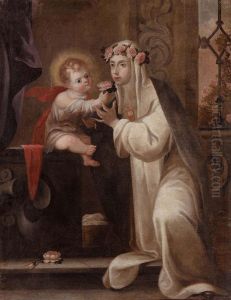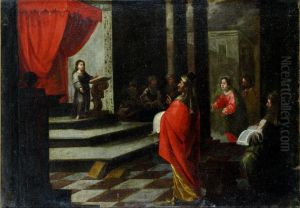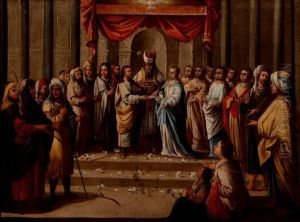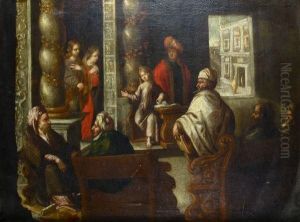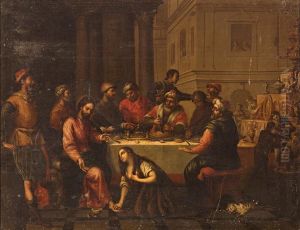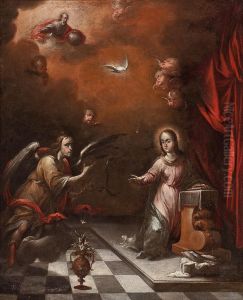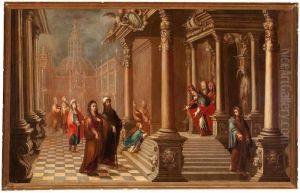Matias De Arteaga Y Alfaro Paintings
Matías de Arteaga y Alfaro was a Spanish Baroque painter and engraver born in Seville in 1633. He hailed from a family with artistic connections; his father, Alonzo de Arteaga, was also a painter. Despite the fact that Matías did not achieve the same level of fame as some of his contemporaries, his work still provides valuable insights into the artistic trends and cultural milieu of 17th-century Spain.
Arteaga y Alfaro was primarily active in his native city of Seville, a hub of artistic activity at the time due to the presence of figures like Bartolomé Esteban Murillo and Francisco de Zurbarán. He is known to have been a member of the painters' guild in Seville and worked within the dominant stylistic framework of the Sevillian school, which was characterized by religious fervor and a particular attention to realism and detail, influenced by the Counter-Reformation.
Although his artistic output was not as prolific or as well-documented as some of his peers, Arteaga y Alfaro's works include both paintings and engravings. His engravings are especially notable for their technical skill and were often based on the works of other artists, serving to disseminate popular compositions of the time. This was a common practice among engravers, which also helped to increase his recognition and the reach of his work.
Examples of his painting can be seen in the Church of San Antonio Abad in Seville, where he painted a series of works dedicated to the life of the titular saint. His style exhibits the chiaroscuro techniques and the tenebrism that were popular among Spanish artists of his era, drawing inspiration from the likes of Caravaggio and his followers.
Arteaga y Alfaro's religious works were imbued with a sense of piety and devotion, reflecting the intense spirituality of the period. His paintings often depicted scenes from the lives of saints or the Virgin Mary, characterized by an emotional depth and attention to the human form.
Matías de Arteaga y Alfaro died in 1704. While he may not be as widely recognized today as some of his contemporaries, his work remains a testament to the rich artistic culture of Baroque-era Seville and contributes to the broader understanding of Spanish art history during this period.
